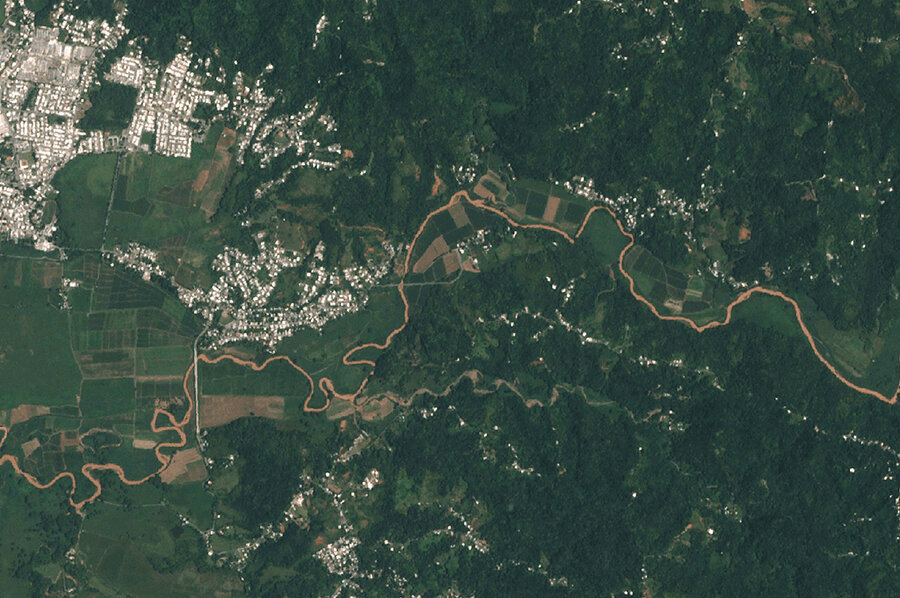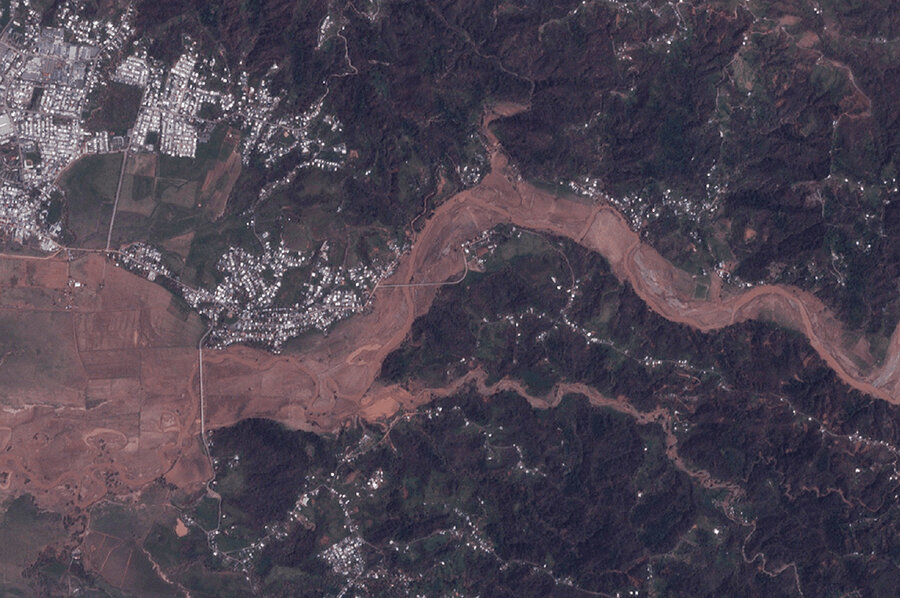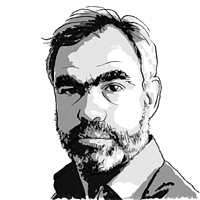DIY do-gooders direct Caribbean disaster relief efforts
Loading...
| Paris
As President Trump paid his visit to hurricane-wracked Puerto Rico on Tuesday a small army of individuals, sitting at their desks far from the spotlight and scattered around the globe, were doing their anonymous bit to put the ravaged island back together again.
They are a new breed of “digital humanitarians.” Crowdsourcing the raw data of hurricane Maria’s trail of destruction, they are helping artificial intelligence experts create maps that will point relief workers to where they are needed most. The project enables individuals who may not have a lot of time or money to make a meaningful contribution to rescue and relief efforts from practically anywhere in the world.
“This is authentic,” says Brooke Simmons of Zooniverse, the citizen-science web platform that has rallied the volunteers to pore over their computers and classify satellite images of storm damage by their severity. “They are really contributing to something that does make a difference.”
This is how it works: Zooniverse takes satellite images of Puerto Rico and posts tens of thousands of “before” and “after” shots of the island on its website. (They have done the same thing for other Caribbean islands hit by hurricanes Irma and Maria, using satellite imagery made freely available for humanitarian use by satellite companies.)
Volunteers – about 10,000 of them have been working on Caribbean imagery since Irma struck the region in early September – then study those images and note features in the “after” shots, such as flooding, blocked roads, damaged buildings, or temporary structures indicating homeless people, that were not there in the “before” photos.
Each set of photos is reviewed by 50 different people; their judgments are sent to an artificial intelligence (AI) team at Oxford University in Britain for aggregation and closer study.
Humans are better than computers at understanding unstructured data, such as satellite photos, because that requires context, says Steven Reece, a machine learning expert at Oxford. But volunteers are not experts and they are “variably reliable,” he points out.
So he uses computer algorithms to determine which amateur analysts are most accurate. He can detect a tendency in one to exaggerate damage reports, for example, or a habit that another may have of always mistaking tarmac for flooded areas.
The computer “can remove biases, fold in other information, and come up with a 95 percent reliable best guess” at the real situation on the ground, Dr. Reece explains. That information is then expressed in a “heat map” that goes to disaster relief teams so that they can set their priorities.
Two years' work in a fortnight
Some volunteers spend a few minutes on Zooniverse.org classifying images and never come back; others classify thousands of pictures each. But between them, says Professor Simmons, an astronomer, “they did two years’ worth of one person’s work in just two weeks” when Irma, and then Maria, struck.
The data that such volunteers gather and computers collate “helps fill a crucial time gap in information,” says Hannah Pathak, interim chief executive officer of Rescue Global, the Britain-based non-governmental disaster relief agency.
It is especially valuable, she adds, when a hurricane, or an earthquake, has knocked out communications. Though local inhabitants know best what has happened in their districts, they often cannot tell anyone else about it, nor do they know what the next town over looks like.
The heat maps “give us a broad brush but indicative assessment ... of where the most acute needs are likely to be,” says Ms. Pathak. “Then our teams on the ground can check it out,” knowing which bridges are down, which roads are flooded, and other critical logistical data.
But sometimes even all the high technology in the world does you no good. For nine days after Maria struck Puerto Rico, Simmons had no pictures of the island to feed to volunteer analysts because storm clouds blocked the satellites’ view for over a week. “It was very frustrating,” she says.
Wanted – Haitian Creole translators
Digital humanitarianism first surfaced during the catastrophic earthquake that rocked Haiti in 2010, killing nearly a quarter of a million people. For the first time, volunteers created post-disaster maps of stricken areas, as Zooniverse is helping to do now in the Caribbean.
At the same time, Haiti’s mobile phone network was flooded with more than 80,000 text messages to 4636, an emergency number, asking for help – but which were in Haitian Creole, a language most international rescue workers could not understand.
“Mission 4636” was set up to forward these messages to a website where Haitian volunteers around the world, including Haiti, picked them up, translated them, and sent them on to rescue workers.
Information technologies “were a key means through which individuals could make a tangible difference in the work of relief and aid agencies without actually being physically present in Haiti,” an academic study published soon after in the journal World Medical and Health Policy found.
Zooniverse, the AI team at Oxford, and Rescue Global have teamed up as The Planetary Response Network; they honed their skills in the Philippines after typhoon Haiyan in 2013, in Nepal after the 2015 earthquake, and in Ecuador last year after the earthquake there.
This year’s hurricane season in the Caribbean, though, has provided them their biggest challenge yet, and Rescue Gobal’s Pathak says the network is proving its worth. As her emergency teams on the ground try to work out where they should start saving lives and providing shelter, she says, the heat maps pinpointing crisis situations offer “a layer of information that speeds up decision making.”
“The huge value we have in disasters is the rapid response that the full crowd can mobilize,” adds Simmons. “That would not be possible even with a team of experts.”









